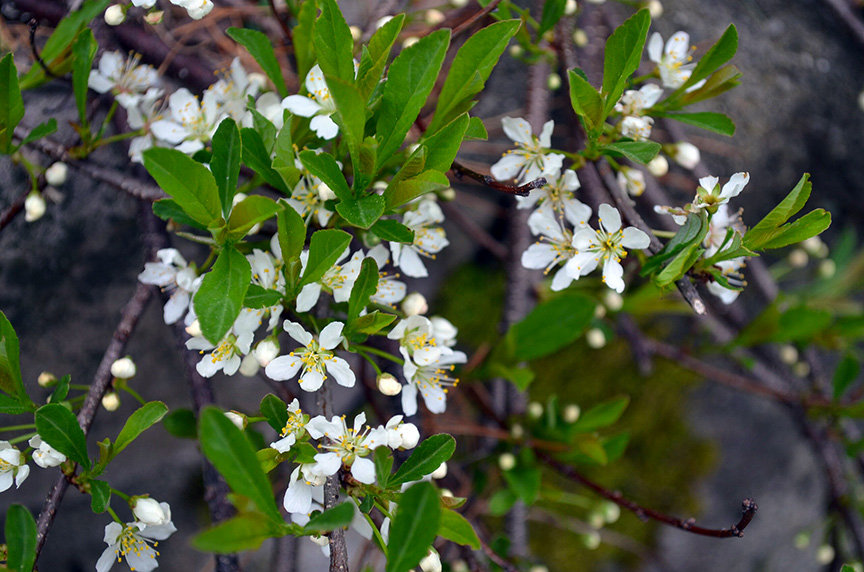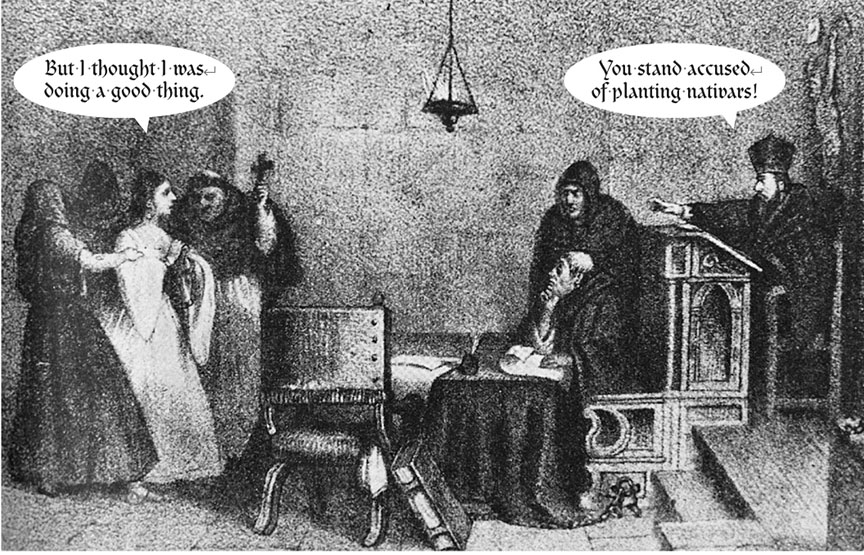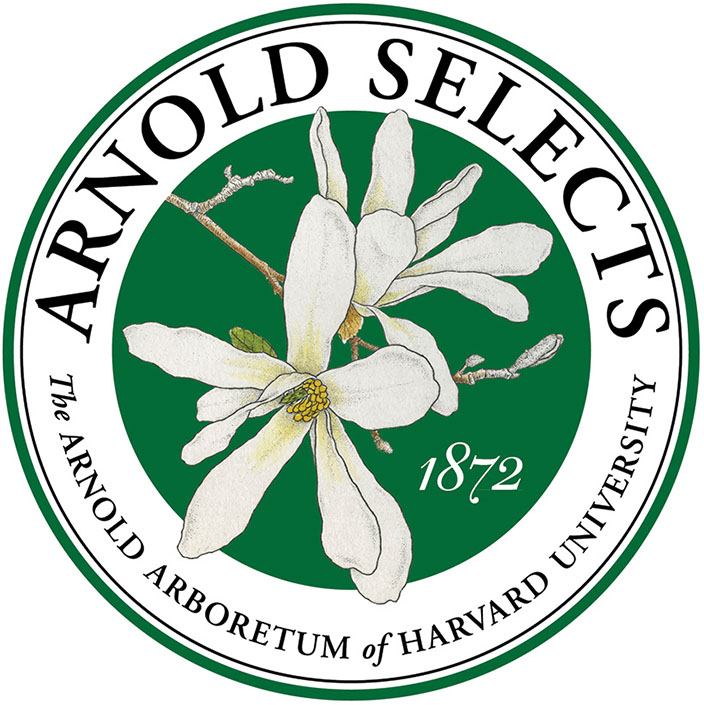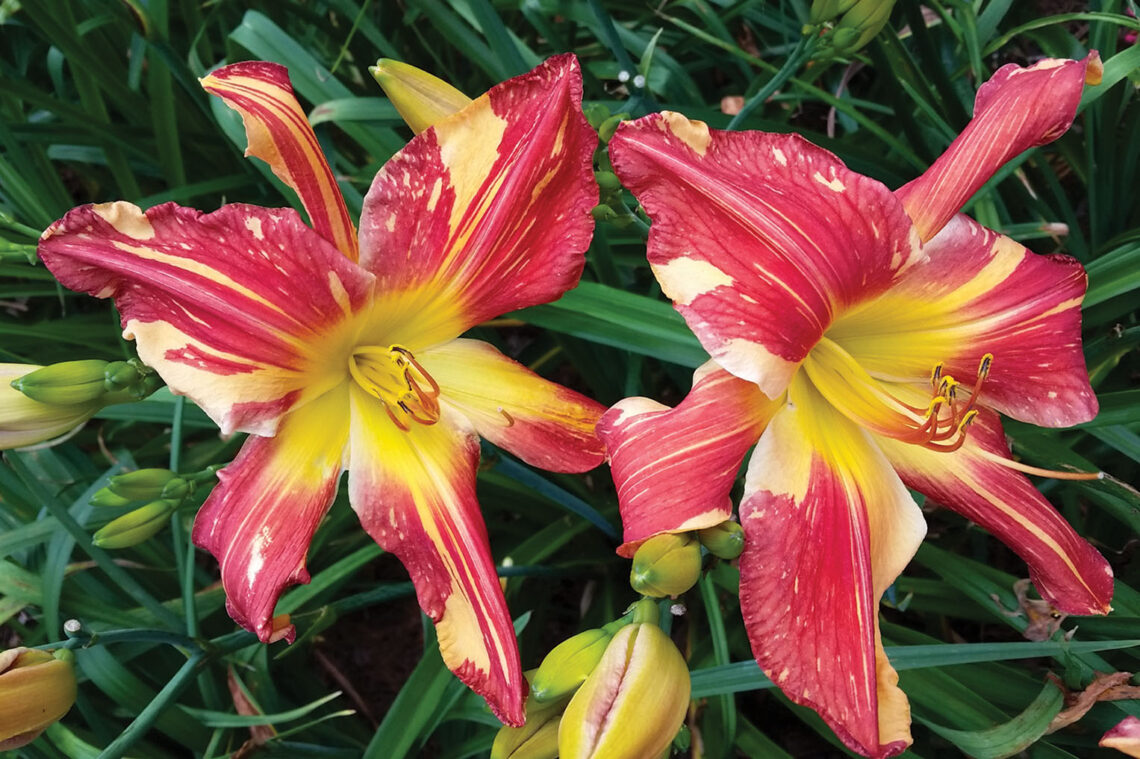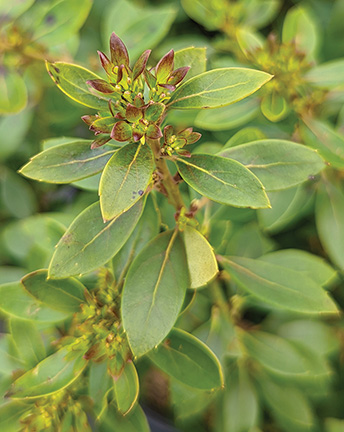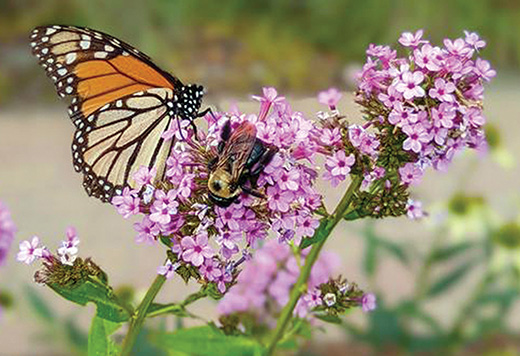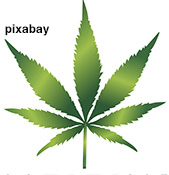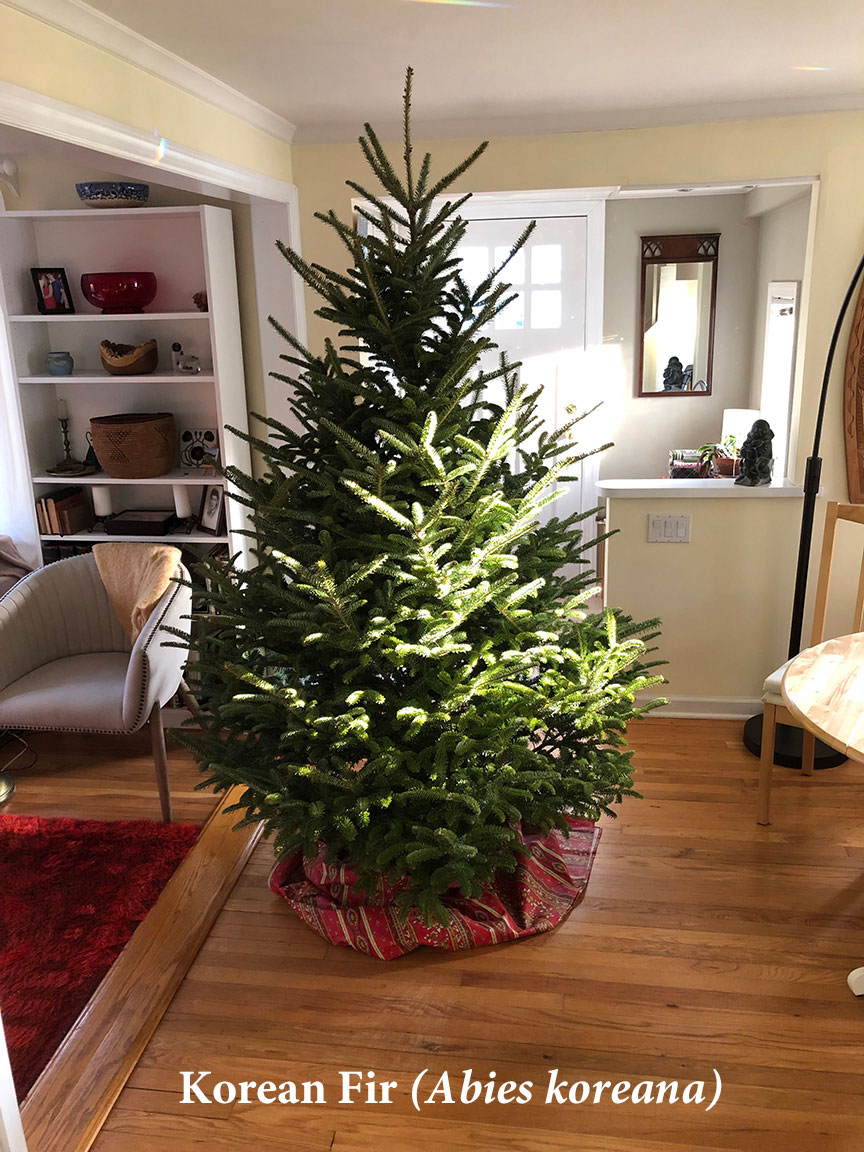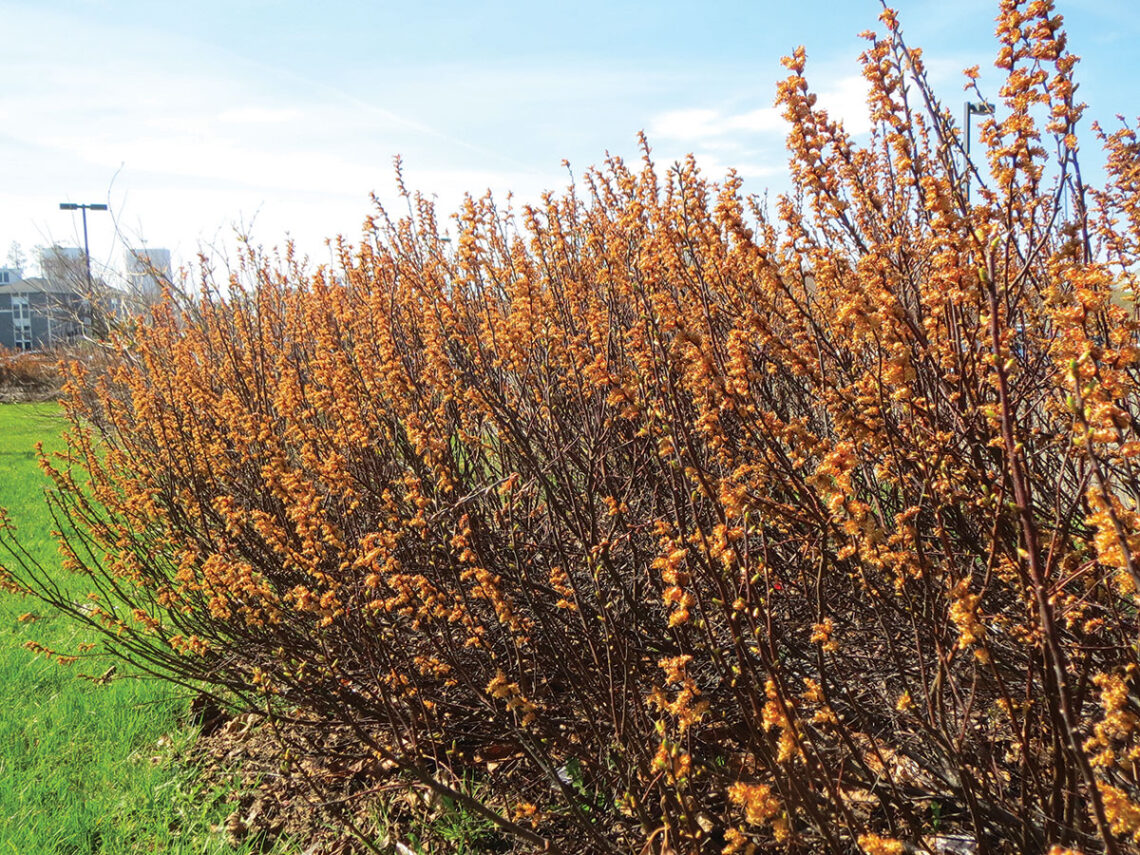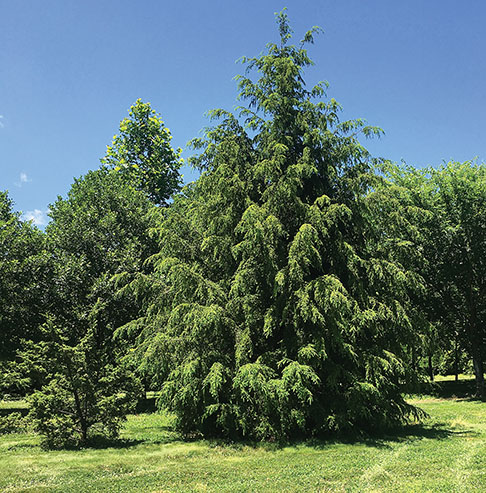Sand Cherry (Prunus pumila) is a deciduous shrub native to North America. In the U.S. it can be found on the East Coast from Maine to Pennsylvania. It tends to grow in sandy locations such as beaches and dunes. Prunus pumila var. depressa ‘Gus Mehlquist,’ is a sprawling variety of sand cherry that was an Arnold Selects introduction in 2022. Its name honors University of Connecticut plant breeding and biology professor Gustav Mehlquist (1906-1999). The Arnold Arboretum describes its discovery as follows: “On May 4, 1990, Harvard University research scientist David Boufford and Robert Nicholson, then Arboretum assistant plant propagator, found an extremely low-growing sprawling sand cherry (Prunus pumila var.…
-
-
Of Cultivars, Nativars & Varieties
By Will Rowlands We’re hearing a lot these days about “native shaming” and even “cultivar shaming.” It’s even become a meme. People are getting grief if they plant anything other than natives. Some are even catching flak if they use anything besides “straight-species,” “true native” or “wild type” plants in their gardens. It’s gotten to the point where growers are wary of using the term cultivar or nativar. Just to be clear, we are proponents of native plants, organic gardening and biodiversity and have been since we took over the magazine in 2010. We are also opposed to the use of invasive or genetically engineered plants. Even so, we find…
-
Cercis canadensis ‘Arnold Banner’
By Will Rowlands The Arnold Arboretum’s plant introduction program (Arnold Selects) started in 2021 saying, “Our model is to provide this unique material to nursery partners for propagation, along with cultural information and backstories, so that a new audience can feel a personal connection to what is growing in their gardens.” Their introduction for 2024 is Cercis canadensis ‘Arnold Banner,’ an Eastern redbud that began as a spontaneous white-flowering mutation on a sport (branch) on a tree in the Arboretum’s collection in May 2009. It was first noticed by Abby Meyer (nee Hird), then an Arboretum Putnam Fellow. “Many of the plants that have become superstars in American nurseries are…
-
New Daylilies from Local Hybridizers
By Russ Allen You would probably never have guessed that some of the most beautiful new daylilies were created by gardeners located in our very own Southern New England area! To illustrate this, the author went on the following quest to highlight some of them for you. BackgroundDaylilies (also referred to as the “perfect perennial”) are quite amenable to hybridizing by local gardeners to create gorgeous new varieties. The performance of daylilies (such as bloom quantity and quality, multiplication rate, weather tolerance, etc.) can vary widely depending on the climate zone, so selecting daylilies that are outstanding performers in one’s geographic area is important. The QuestSince the author lives in…
-
In Search of an Improved Inkberry
By Michael Dirr Ilex glabra, inkberry or gallberry, one of best native broadleaf evergreen shrubs, is used extensively in contemporary landscapes from Maine to Georgia and throughout the Midwest. The native range extends from Nova Scotia to Maine, south along the coast to Florida and west to Texas. According to the Florida Native Plant Society, the species grows in low flatwoods, seeps, coastal swales, bogs and sinks. I observed the species in wet areas on Cape Cod where it formed suckering colonies and in low flatwoods in the Okefenokee Swamp in South Georgia. Bonnie and I were hiking In the Okefenokee through thickets of this and Aronia arbutifolia and all…
-
Phlox paniculata ‘Jeana’
Phlox paniculata ‘Jeana’ is the Perennial Plant Association’s Perennial Plant of the Year for 2024. ‘Jeana’ was named for Jeana Prewitt who found it growing along the Harpeth River near Nashville, Tenn. Featured photo courtesy of Prides Corner Farms (pridescorner.com) “I love Phlox paniculata ‘Jeana’ and it is my go-to variety in my garden designs,” says Nancy DuBrule Clemente from Natureworks in Northford, a longtime friend of the magazine. “It does attract tons of pollinators, especially tiger swallowtail butterflies galore. If you deadhead it, it blooms and blooms. It really is superior. The panicles are longer and more pointed which makes it distinctive.” It’s resistant to Powdery Mildew and makes…
-
Growing Cannabis in Connecticut – Part I
By Bryan Connolly By now you’ve probably heard a lot about Cannabis in Connecticut. As of July 1, 2022, it is legal to possess up to 1.5 ounces of THC Cannabis on your person and up to 5 ounces in your house in the state. Additionally, on Jan 10, 2023, dispensaries opened for legal sale to individuals over 21 for recreational use. For gardeners the exciting part is yet to come. On July 1, 2023, adults over 21 will be allowed to cultivate 6 THC Cannabis plants in their homes. This article will introduce the plant and the laws on its cultivation. Part 2 will appear in a subsequent issue…
-
Christmas Trees & Conifers for a Changing Climate
By Richard S. Cowles Six years ago, Dr. Richard (Dick) Jaynes wrote a splendid article “All About Christmas Trees,” for Connecticut Gardener (Vol. 21, No. 5, pp. 2-5). In that article, he described the basics on how Christmas trees are grown in our state. This article can be considered an update; in it, I will explain what changes are likely to take place in the species being grown and why these changes are necessary. This information may also be useful for gardeners who wish to know which species of conifers are suitable for planting in their landscape, and provides guidance regarding the various diseases, insects, and mites affecting these species…
-
UConn Unveils NativeStar® Trademark
By Anna Zarra Aldrich, CAHNR The University of Connecticut, in collaboration with researchers in the College of Agriculture, Health and Natural Resources (CAHNR), have established a trademark for improved cultivars of novel, native plant species. Professor of plant breeding and horticulture Mark Brand and associate professor of horticulture Jessica Lubell-Brand have been developing new cultivars for years, making more attractive and manageable plants for landscaping in Connecticut and areas with similar climates. These plants will be marketed under the NativeStar® trademark. The NativeStar® trademark is inspired by the fact that all of its plants are native to the northeast region of the United States, and because they have demonstrated to…
-
Traveler – Adelgid Resistant Hemlock
By Kim Kaplan A first-of-its-kind hybrid hemlock, which is not vulnerable to the insect hemlock woolly adelgid, has been developed by the Agricultural Research Service’s (ARS) U.S. National Arboretum. Traveler, as the new variety is named, is a cross between the Chinese hemlock (Tsuga chinensis) and the native Carolina hemlock (Tsuga caroliniana). The new tree has the native hemlock’s handsome symmetrical evergreen growth habit with slightly weeping branches. It has a moderately slow growth rate and produces large cones. But its most important characteristic is the ability to survive attack from the hemlock woolly adelgid. “We’ve had trials of Traveler growing since 2000, and we haven’t seen any damage from…
